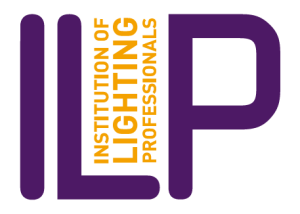During the ILP’s centenary year, Lighting Journal is speaking to members about how they ‘found’ lighting and how they feel pathways into the profession can be improved. This month we spoke to lighting designer Graham Festenstein.
I suppose I’m unusual in that I did choose lighting as a career rather than falling into it; but in theatre, in theatre lighting. I came to lighting through a broad interest in technology but also I wanted to pursue it creatively. I was interested in theatre, performance and music but I was also interested in physics, science and engineering.
Various members of my family used to take theatre shows to Edinburgh, and I used to help with that when I was about 14. I also used to work with my brother doing exhibition installation work, which is again about technical work in a creative environment.
I did a degree in performance arts at Middlesex Polytechnic, as it was then, which was the only way I could do a degree that involved technical theatre. The only other option had been to do a diploma in stage management, and I wanted a degree not a diploma; I wanted something that had more of an intellectual component to it.
OVERSEAS LIGHTING TOURS
After a year on the course, I took a year out because I was so busy doing other things. I was doing a lot of technical theatre and fringe shows; I had gone up to Edinburgh a few times too. Through a contact at the poly, I then got a job lighting a show at the National Gallery. That developed into a tour of the US – what started off as a bit of work on the side ended up as being part of two tours of the US, Canada and Australia. So, I ended up never going back to Middlesex!
After that I went to work at the Almeida Theatre, which at the time was a very cutting-edge, left-field playhouse. I then worked for eight years in a multi-purpose venue in Cambridge, doing more rock ‘n’ roll lighting than theatre actually. Part of that role, however, was building management and running maintenance teams and so, consequently, I got trained up and qualified to do that sort of work.
I also at this time was managing refurb projects, including for lighting. That gave me a gateway for understanding the whole other world of lighting design and architectural lighting.
At that time – mid-1990s – there weren’t that many people doing architectural lighting design, it was quite a niche thing anyway. I also had a period where I went off and worked on outdoor events as a freelance electrician. I then went to Sutton Vane for about four years, until 2000, before, post-millennium, starting my own lighting design company, Graham Festenstein Lighting Design.
For me, the attraction of lighting is that combination of creativity and technology and science. Especially in exterior public spaces, you’ve got what it looks like, you’ve got the requirements to make it work safely, and you’ve got the technical requirements to create something that is buildable and maintainable.
But then you’ve also got the intangible stuff – the psychology and sociology of lighting, the creativity of lighting. There is, too, the collaborative element of working alongside different disciplines that I enjoy.

LIMITATIONS OF MASTER’S ROUTE
People by and large have no idea that industry, as an industry, even exists; they just think lighting happens. On the one hand, one of the brilliant things about the profession is that people do come into it from lots of different backgrounds. It is always amazing to be working with people who are trained in different disciplines, bringing that different perspective, and coming together on the same stuff.
So, it is a really complicated thing, because you don’t want to damage that ecosystem of lighting attracting people with different skills and backgrounds. Just having a master’s degree entry route into lighting design can be restrictive if it limits the breadth of young people from going into the industry. I don’t think we train people enough and there are not enough different options or routes in.
Even the large lighting practices are relatively small. So I think we do have a really serious problem. A lot of potentially good people are not going to get an opportunity to work in lighting because there is no route in for them. When I’ve done festivals such as Lewes Light, and I do talks with FE colleges (I do quite a lot of STEM work), you get lots of enthusiasm for lighting from the young people. But when you’re talking to 16-19-yeard-olds who are doing foundation degrees, only a very small number are going to go on, academically, to end up with a master’s degree.
Yet most architectural practices, when they’re looking for a starting position, they’re looking for someone with a master’s. So that is incredibly limiting. Yet at the same time we don’t want to create entry routes where we’re generating false expectations that people are going to get a job at the end of it.

Finally, more widely, I think we need to be raising the profile of what we do outside of our industry. Even just within the big architectural practices, there is an awareness now that lighting is important, but there is still a remarkable lack of understanding, really, as to why. There is I think a wider education piece there, and with the general public, and about our environmental role, and our public safety role, too. The perception that ‘bright is good’; all of that we need to challenge.
If we can deal with those issues, then it raises the profile of the industry and then that will encourage young people to look at lighting.



